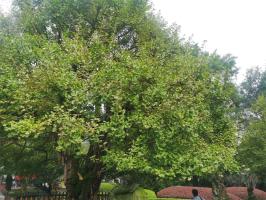Where to Plant 1 Trillion Trees
Planting one trillion trees is a massive undertaking that requires careful planning and implementation. Not all areas of the world are suitable for reforestation, and certain factors must be considered before planting trees. In this article, we explore some of the best places to plant one trillion trees to maximize their benefits.
Tropical Forests
Tropical forests are some of the most biodiverse ecosystems on Earth, and they play a crucial role in regulating the planet's climate. They store massive amounts of carbon and produce oxygen, making them essential for our survival. However, tropical forests have been severely degraded or destroyed in many regions over the past few decades. Therefore, planting trees in these areas can help restore these ecosystems and prevent further damage.
The Amazon, Congo Basin, and Southeast Asia are some of the largest tropical forest regions that can benefit from reforestation. These areas can potentially sequester billions of tons of carbon while also supporting a wide range of wildlife, including endangered species.
Deserts
Deserts cover about one-third of the world's land surface and are characterized by harsh climatic conditions that limit plant growth. However, some areas of deserts can support plant life, especially in areas with access to water. Therefore, planting trees in these regions could help combat desertification and provide ecosystem services such as carbon sequestration and habitat restoration.
The Sahara, Gobi, and Mojave deserts are some of the largest deserts in the world. By planting trees in these regions, we can potentially convert degraded lands into forests, creating new habitats for wildlife, and sequestering millions of tons of carbon in the process.
Coastal Regions
Coastal regions are essential for marine life and provide numerous ecosystem services such as carbon storage, flood protection, and erosion control. However, due to human activities such as urbanization and land use change, these areas are under threat. Planting trees in coastal regions can help mitigate these threats and provide multiple benefits to local communities and wildlife.
Mangrove forests are a prime example of the importance of coastal reforestation. Mangroves are unique ecosystems that can withstand harsh saltwater conditions and provide crucial habitats for fish, birds, and other wildlife. They are also excellent carbon sinks, storing up to four times more carbon per hectare than rainforests. Therefore, planting trees in degraded or destroyed mangrove forests can help restore these vital ecosystems and provide significant environmental benefits.
Conclusion
Planting one trillion trees is an ambitious goal, but it is achievable with proper planning and implementation. By choosing suitable areas for reforestation, we can maximize the benefits of tree planting and help mitigate some of the world's most pressing environmental challenges such as climate change, loss of biodiversity, and air pollution. Therefore, we must work together as a global community to support tree planting initiatives and empower local communities to take action on a massive scale.

 how many times do yo...
how many times do yo... how many planted tre...
how many planted tre... how many pine trees ...
how many pine trees ... how many pecan trees...
how many pecan trees... how many plants comp...
how many plants comp... how many plants can ...
how many plants can ... how many plants and ...
how many plants and ... how many pepper plan...
how many pepper plan...






























